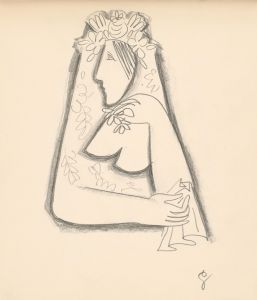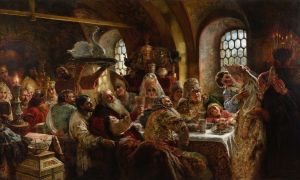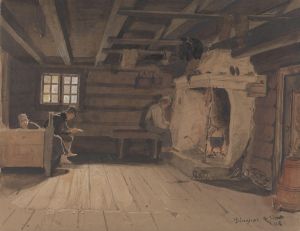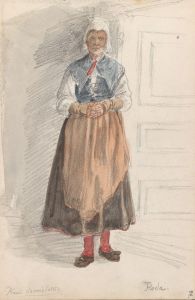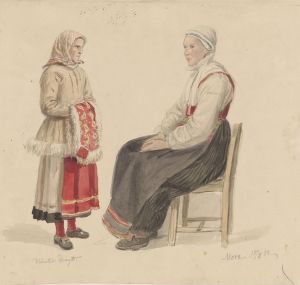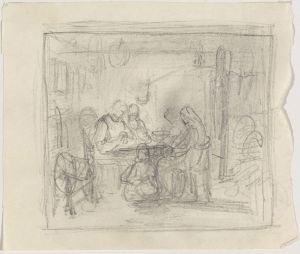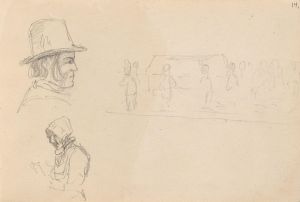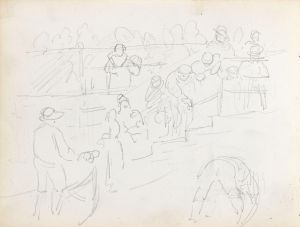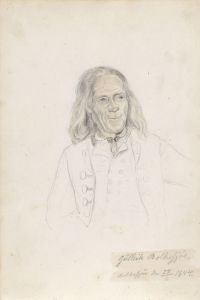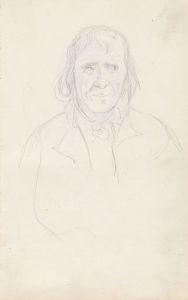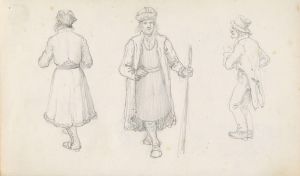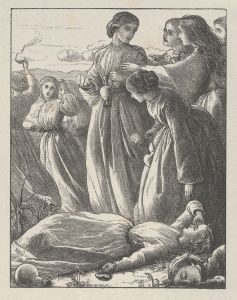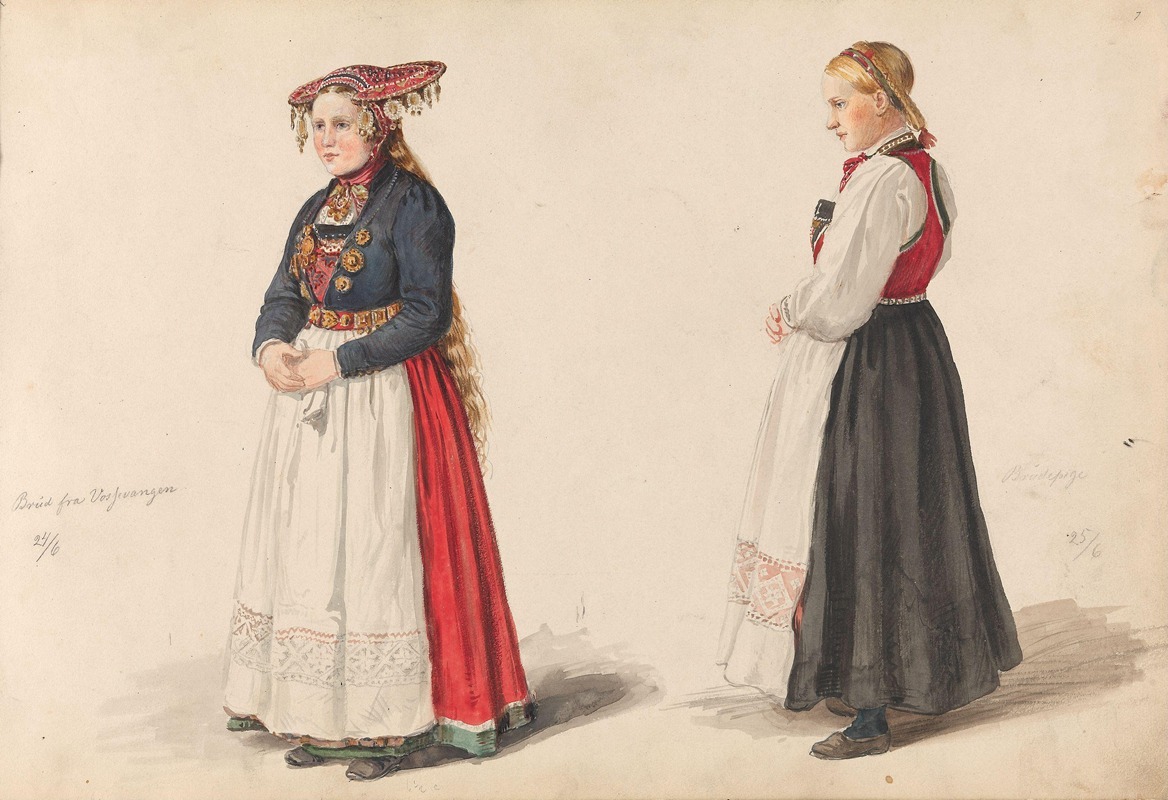
Brud fra Vossevangen; brudepike Guro Lødve
A hand-painted replica of Adolph Tidemand’s masterpiece Brud fra Vossevangen; brudepike Guro Lødve, meticulously crafted by professional artists to capture the true essence of the original. Each piece is created with museum-quality canvas and rare mineral pigments, carefully painted by experienced artists with delicate brushstrokes and rich, layered colors to perfectly recreate the texture of the original artwork. Unlike machine-printed reproductions, this hand-painted version brings the painting to life, infused with the artist’s emotions and skill in every stroke. Whether for personal collection or home decoration, it instantly elevates the artistic atmosphere of any space.
Adolph Tidemand was a prominent Norwegian painter known for his detailed and culturally rich depictions of Norwegian life and traditions. One of his notable works is "Brud fra Vossevangen; brudepike Guro Lødve," which translates to "Bride from Vossevangen; Bridesmaid Guro Lødve." This painting is a part of Tidemand's broader exploration of Norwegian folk culture, which he captured with great authenticity and respect.
Adolph Tidemand was born on August 14, 1814, in Mandal, Norway. He studied art in Copenhagen and later in Düsseldorf, where he became associated with the Düsseldorf school of painting. This school was known for its detailed and realistic style, which Tidemand adopted and adapted to his focus on Norwegian subjects. His works often depicted rural life, traditional costumes, and local customs, providing a visual record of Norwegian cultural heritage during the 19th century.
"Brud fra Vossevangen; brudepike Guro Lødve" is a testament to Tidemand's dedication to capturing the essence of Norwegian folk traditions. The painting portrays a bride from Vossevangen, a region in Norway known for its picturesque landscapes and rich cultural history. The inclusion of the bridesmaid, Guro Lødve, adds a personal touch to the scene, suggesting a specific event or story that Tidemand might have been inspired by.
The painting is characterized by its attention to detail, particularly in the depiction of traditional Norwegian costumes. Tidemand was meticulous in his research, often traveling to rural areas to study and sketch the local people and their attire. This dedication is evident in the intricate patterns and vibrant colors of the clothing in the painting, which reflect the traditional costumes of the Vossevangen region.
Tidemand's work is significant not only for its artistic merit but also for its ethnographic value. During the 19th century, Norway was undergoing significant social and political changes, and there was a growing interest in national identity and cultural heritage. Tidemand's paintings played a crucial role in this cultural revival, as they celebrated and preserved the traditional ways of life that were at risk of disappearing.
"Brud fra Vossevangen; brudepike Guro Lødve" is part of a larger body of work by Tidemand that includes other famous paintings such as "Haugianerne" and "Søndag i Hardanger." These works collectively highlight Tidemand's contribution to Norwegian art and culture, as they provide a window into the past and a celebration of the country's rich traditions.
Adolph Tidemand's legacy continues to be celebrated in Norway and beyond. His works are housed in several prominent museums, including the National Gallery in Oslo, where they are appreciated for both their artistic quality and their cultural significance. Tidemand passed away on August 25, 1876, but his paintings remain a vital part of Norway's cultural heritage, offering insight into the country's history and the lives of its people during the 19th century.
In summary, "Brud fra Vossevangen; brudepike Guro Lødve" is a remarkable example of Adolph Tidemand's ability to capture the spirit of Norwegian folk culture. Through his detailed and respectful portrayal of traditional costumes and customs, Tidemand has left an enduring legacy that continues to inspire and educate audiences about Norway's rich cultural history.





